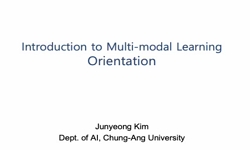In the context of face recognition, traditional methods have limitations when dealing with out-of-distribution data. To address these challenges, our study leverages the potential of unsupervised training within the transformer architecture. We develo...
http://chineseinput.net/에서 pinyin(병음)방식으로 중국어를 변환할 수 있습니다.
변환된 중국어를 복사하여 사용하시면 됩니다.
- 中文 을 입력하시려면 zhongwen을 입력하시고 space를누르시면됩니다.
- 北京 을 입력하시려면 beijing을 입력하시고 space를 누르시면 됩니다.
https://www.riss.kr/link?id=A109405744
- 저자
- 발행기관
- 학술지명
- 권호사항
-
발행연도
2024
-
작성언어
English
- 주제어
-
등재정보
KCI등재
-
자료형태
학술저널
- 발행기관 URL
-
수록면
3281-3290(10쪽)
- 제공처
-
0
상세조회 -
0
다운로드
부가정보
다국어 초록 (Multilingual Abstract)
In the context of face recognition, traditional methods have limitations when dealing with out-of-distribution data. To address these challenges, our study leverages the potential of unsupervised training within the transformer architecture. We developed an automatic video processing approach and a two-stage training model. This method utilizes both abundant unlabeled data in the wild and high-quality labeled data to enhance the training process, employing self-supervised contrastive loss and supervised classification loss, respectively. Experimental results demonstrate the superiority of our approach in terms of generalization across diverse data distributions and improved accuracy. This study validates the effectiveness of unsupervised training for face recognition and is expected to contribute to advancements in handling out-of-distribution data.
동일학술지(권/호) 다른 논문
-
웹툰 제작에서 AI 사용 활성화를 위한 작가보조형 AI 연구
- 한국디지털콘텐츠학회
- 황선태
- 2024
- KCI등재
-
- 한국디지털콘텐츠학회
- 이미진
- 2024
- KCI등재
-
자세 추정 알고리즘을 이용한 웹캠 기반 격투 게임 제어 시스템 연구
- 한국디지털콘텐츠학회
- 강경민
- 2024
- KCI등재
-
생성형 AI기술을 활용한 컴퓨터 사이언스 문제 생성 모델 개발 및 평가
- 한국디지털콘텐츠학회
- 김정순
- 2024
- KCI등재





 DBpia
DBpia





